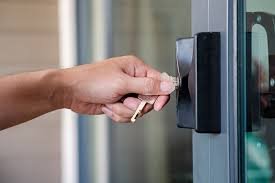In today’s digital-first world, almost every aspect of our lives—banking, shopping, healthcare, communication—relies on the internet. While this brings convenience, it also means your personal data is constantly at risk. Cybercriminals are always on the lookout for opportunities to steal sensitive information, which can then be used for identity theft, fraud, or even blackmail.
Protecting your personal data isn’t just a matter of installing antivirus software—it requires a complete strategy. In this article, we’ll explore practical, effective ways to keep hackers away from your personal information.
Why Your Personal Data Matters to Hackers
Hackers target personal data because it can be extremely valuable on the black market. Commonly stolen information includes:
-
Full names and addresses – Useful for identity theft.
-
Credit card and banking details – Direct access to financial accounts.
-
Social Security or National ID numbers – Can be used to open fraudulent accounts.
-
Login credentials – To hijack email, social media, or subscription services.
-
Medical records – Can be exploited for insurance fraud or blackmail.
Once stolen, your data can be sold on the dark web, sometimes within hours of being breached.
1. Use Strong, Unique Passwords
A strong password is your first line of defense. Unfortunately, many people still use simple, predictable ones like 123456 or password.
Best practices for passwords:
-
At least 12 characters long.
-
A mix of uppercase, lowercase, numbers, and symbols.
-
Avoid dictionary words and personal info (birthdays, pet names).
-
Use a different password for every account.
Pro tip: Use a password manager like Bitwarden, LastPass, or 1Password to generate and store complex passwords securely.
2. Enable Multi-Factor Authentication (MFA)
Multi-factor authentication requires you to provide two or more verification methods—like a password plus a one-time code sent to your phone.
Why it works: Even if a hacker steals your password, they won’t be able to log in without the second verification step.
Recommended MFA methods:
-
Authentication apps (Google Authenticator, Authy).
-
Physical security keys (YubiKey).
-
SMS codes (less secure than apps or keys, but still better than nothing).
3. Be Wary of Phishing Scams
Phishing is one of the most common ways hackers steal information. These attacks often come in the form of emails, text messages, or fake websites pretending to be from legitimate companies.
Signs of phishing attempts:
-
Spelling or grammar errors.
-
Suspicious sender email addresses.
-
Links that look strange or don’t match the official site.
-
Urgent language like “Your account will be suspended!”
What to do:
-
Don’t click on suspicious links.
-
Hover over links to see the real URL.
-
Verify messages directly with the company.
4. Keep Your Devices Updated
Hackers often exploit security holes in outdated software. That’s why keeping your devices up to date is critical.
Update regularly:
-
Operating systems (Windows, macOS, Linux, Android, iOS).
-
Web browsers (Chrome, Firefox, Safari).
-
Applications (especially banking or communication apps).
Pro tip: Enable automatic updates whenever possible.
5. Secure Your Wi-Fi Network
If your home Wi-Fi isn’t secure, hackers can intercept your internet traffic or even break into your connected devices.
Steps to secure Wi-Fi:
-
Change the default router password.
-
Use WPA3 encryption (or at least WPA2).
-
Hide your network name (SSID).
-
Limit guest access with a separate network.
6. Use a VPN on Public Wi-Fi
Public Wi-Fi in cafes, airports, or hotels is convenient—but risky. Hackers can set up fake networks or intercept traffic on unsecured ones.
Solution:
-
Use a Virtual Private Network (VPN) to encrypt your internet traffic.
-
Avoid accessing sensitive accounts on public networks unless using a VPN.
Popular VPNs include NordVPN, ExpressVPN, and ProtonVPN.
7. Protect Your Smartphone
Smartphones store a huge amount of personal information—and hackers know it.
How to secure your phone:
-
Set a strong passcode or biometric lock.
-
Enable Find My Device or similar tracking tools.
-
Don’t install apps from unknown sources.
-
Regularly review app permissions.
8. Encrypt Your Data
Encryption turns your data into unreadable code that only authorized parties can decipher.
Where to use encryption:
-
Full-disk encryption for laptops and smartphones.
-
End-to-end encrypted messaging apps (Signal, WhatsApp).
-
Encrypted cloud storage (Tresorit, Sync.com).
9. Monitor Your Accounts and Credit Reports
Early detection is key to stopping hackers from causing long-term damage.
How to monitor:
-
Set up alerts for bank account activity.
-
Use credit monitoring services.
-
Regularly check your credit reports for unfamiliar accounts.
10. Limit What You Share Online
The more personal details you post on social media, the easier it is for hackers to guess security answers or impersonate you.
Smart sharing tips:
-
Avoid posting travel plans in real-time.
-
Keep your full date of birth private.
-
Use privacy settings to limit who can see your posts.
11. Beware of Deepfake and AI-Driven Scams
In 2025, hackers are increasingly using AI tools to impersonate voices, create fake videos, or mimic writing styles.
Example risks:
-
A fake “relative” calls you asking for emergency funds.
-
A deepfake video of your boss requests sensitive data.
Defense: Always verify through a separate, trusted communication channel.
12. Back Up Your Data
Regular backups protect you from ransomware attacks and hardware failures.
Best practices:
-
Keep at least one backup offline (external hard drive).
-
Use secure cloud backup services.
-
Schedule automatic backups weekly or daily.
13. Adopt the Zero Trust Mindset
The Zero Trust approach assumes that no one—inside or outside your network—should be automatically trusted.
How to apply it personally:
-
Always verify before sharing sensitive information.
-
Don’t reuse passwords.
-
Review permissions regularly for apps and devices.
Final Thoughts
Hackers are becoming more sophisticated, using advanced technologies like AI, deepfakes, and phishing kits to target individuals. Protecting your personal data is no longer optional—it’s a daily habit.
By following the steps above—strong passwords, multi-factor authentication, regular updates, encrypted communication, and cautious online behavior—you significantly reduce your risk of becoming a victim. For additional tips and detailed cybersecurity strategies, explore resources like Know How Blogs, which regularly cover the latest threats and solutions to keep your information safe.





